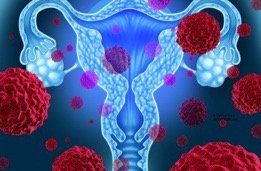Niraparib/Dostarlimab/Chemo Improves PFS Vs SOC in Advanced Ovarian Cancer
Niraparib/dostarlimab with platinum-therapy met its PFS end point in patients with advanced ovarian cancer in the phase 3 FIRST-ENGOT-OV44 trial.
Niraparib/dostarlimab with platinum-therapy met its PFS end point in patients with advanced ovarian cancer in the phase 3 FIRST-ENGOT-OV44 trial.

Niraparib (Zejula) and dostarlimab-gxly (Jemperli) with standard-of-care (SOC) chemotherapy in patients with first-line advanced ovarian cancer met its primary end point of progression-free survival (PFS) compared with SOC chemotherapy, according to headline results from the randomized, double-blind phase 3 FIRST-ENGOT-OV44 trial (NCT03602859).1
Although the trial did meet its PFS end point, it did not reach a point of statistical significance for the key secondary end point of overall survival (OS). Additional analyses are ongoing, and future data will be presented at an upcoming scientific meeting and shared with health authorities.
“As part of our focus in gynecological cancers, we continue to evaluate the potential of this combination and look forward to sharing full results from the trial,” Hesham Abdullah, senior vice president and global head of oncology, research and development, at GSK, stated in the press release.1
The trial regimen demonstrated a safety and tolerability profile that was consistent with known safety data on each individual agent.
Patients enrolled into the trial were randomly assigned, in a 1:1:2 ratio, to 1 of 3 trial arms, which administered treatment as follows:
- Arm 1 (n = 193): Patients were given SOC chemotherapy (175 mg/m2 of paclitaxel and 5 to 6 mg/mL/minute of area under the curve carboplatin on day 1 every 21 days and, if added, 7.5 mg/kg or 15 mg/kg of bevacizumab [Avastin] every 21 days) followed by placebo maintenance.2
- Arm 2 (n = 385): Patients received SOC chemotherapy then niraparib maintenance at 100 mg orally.
- Arm 3 (n = 753): Patients received SOC chemotherapy and dostarlimab (500 mg of dostarlimab on day 1 every 3 weeks for cycles 2 to 6, then 1000 mg of dostarlimab on day 1 every 6 weeks for up to 3 years until disease progression, unacceptable toxicity, withdrawal, or investigator decision) followed by niraparib and dostarlimab maintenance.
For all 3 trial arms, bevacizumab could be added to the trial regimen at the investigator’s discretion.
As a result of the approval of first-line PARP inhibitors, trial arm 1 was disbanded, and patients were randomly assigned, in a 1:2 ratio, to either trial arm 2 or arm 3.1
The trial’s primary end point was PFS, defined as time from treatment randomization to the earlier date of assessment of progression or death by any cause in absence of progression, in patients with stage III or IV high-grade nonmucinous epithelial ovarian cancer.2
Secondary end points included OS, change from baseline in the European Quality of Life 5-Dimension 5-Level scale, time to first subsequent therapy, objective response rate, duration of response, disease control rate, and safety.
To be enrolled, patients were required to have a histologically confirmed diagnosis of high-grade stage III or IV nonmucinous epithelial ovarian, fallopian tube, or peritoneal cancer (all patients with stage IV disease were eligible); adequate organ function; an ECOG performance status of 0 or 1; normal blood pressure; and the ability to take oral medication, among other requirements.
Patients were not eligible for inclusion if they had mucinous, germ cell, transitional cell, or undifferentiated tumors; low-grade or grade 1 epithelial ovarian cancer; known active central nervous system metastases, carcinomatous meningitis, or both; clinically significant cardiovascular disease; known history or diagnosis of myelodysplastic syndrome or acute myeloid leukemia; and a known contraindication to any components of paclitaxel, carboplatin, niraparib, bevacizumab, dostarlimab, or their excipients.
References
- GSK announces FIRST trial met its primary endpoint of progression free survival in first line advanced ovarian cancer. News release. GSK. December 20, 2024. Accessed December 20, 2024. https://tinyurl.com/2ndfhrhn
- A comparison of platinum-based therapy with TSR-042 and niraparib versus standard of care (SOC) platinum-based therapy as first-line treatment of stage III or IV nonmucinous epithelial ovarian cancer (FIRST). ClinicalTrials.gov. Updated August 16, 2024. Accessed December 20, 2024. https://tinyurl.com/9retnzzn
Late Hepatic Recurrence From Granulosa Cell Tumor: A Case Report
Granulosa cell tumors exhibit late recurrence and rare hepatic metastasis, emphasizing the need for lifelong surveillance in affected patients.